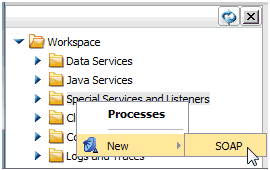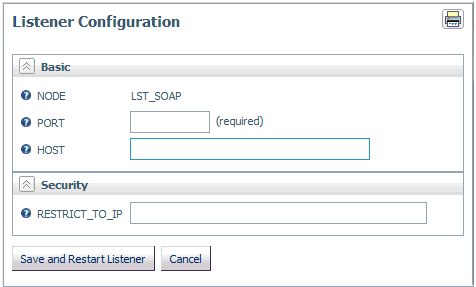A SOAP listener needs to be configured before it will appear in the Special Services and Listeners folder.
- From the menu bar, select Workspace.
-
Right-click the Special Services and Listeners folder,
and select New, then SOAP.

The Listener Configuration page opens.

- Enter values in the PORT and HOST fields.
- Optionally, enter a host or IP address that will be accepted by listener in the RESTRICT_TO_IP field.
- Click Save and Restart Listener.
The SOAP listener is added to the Special Services and Listeners folder.